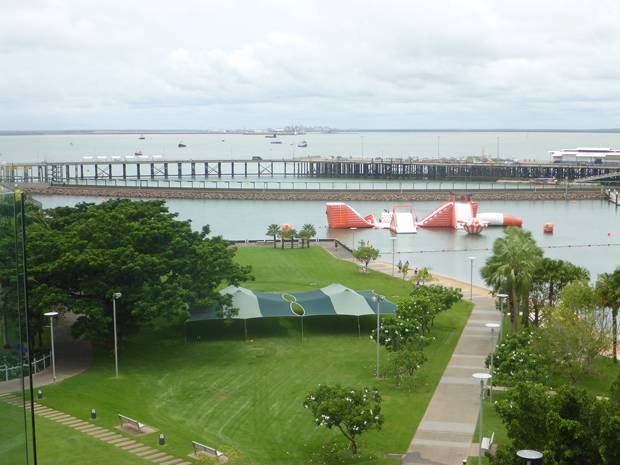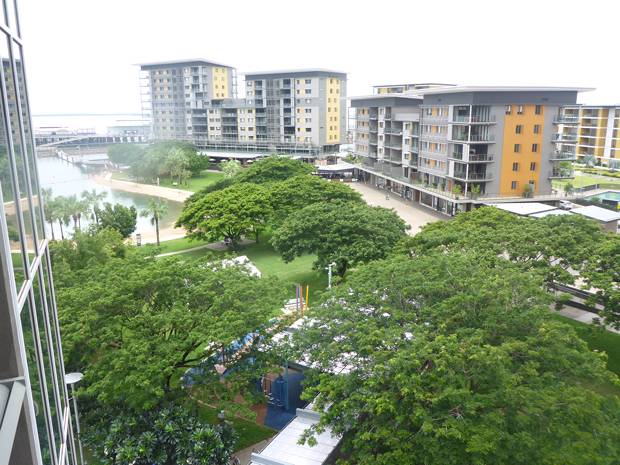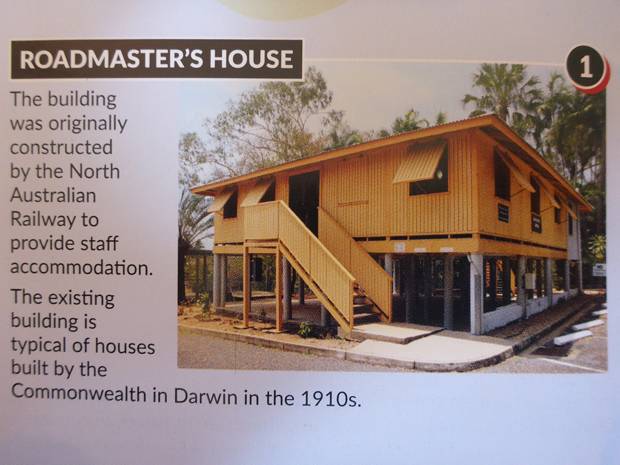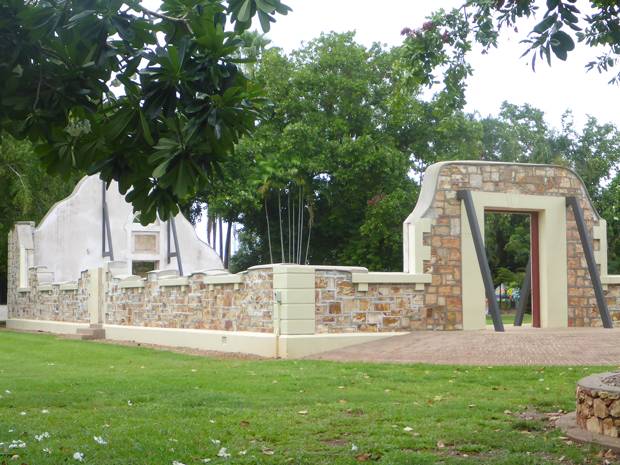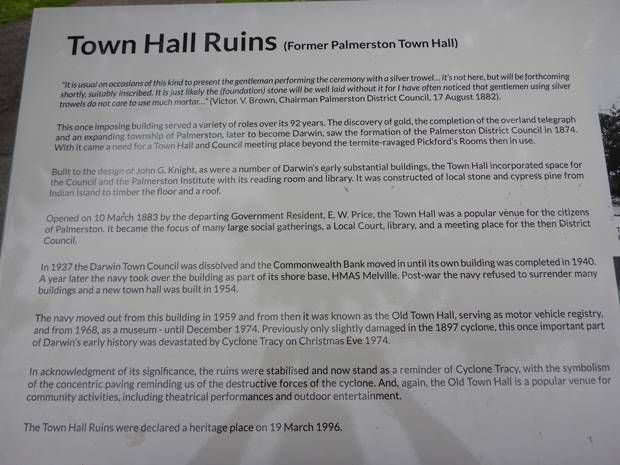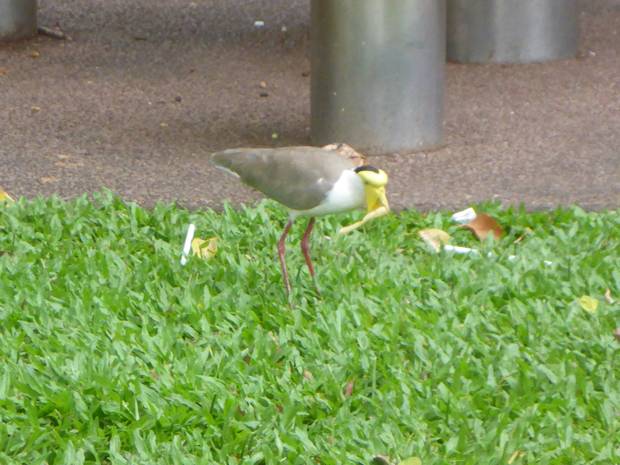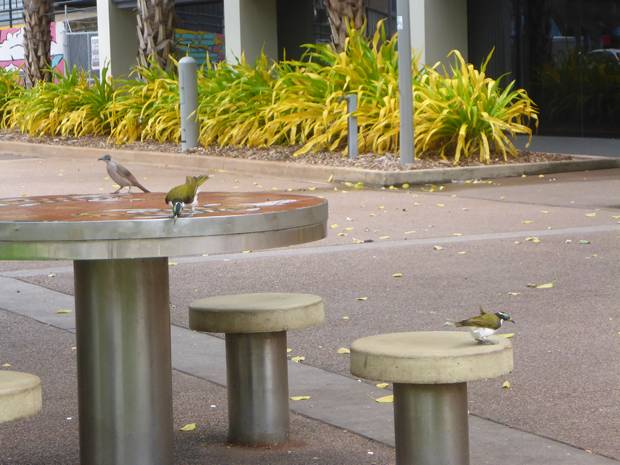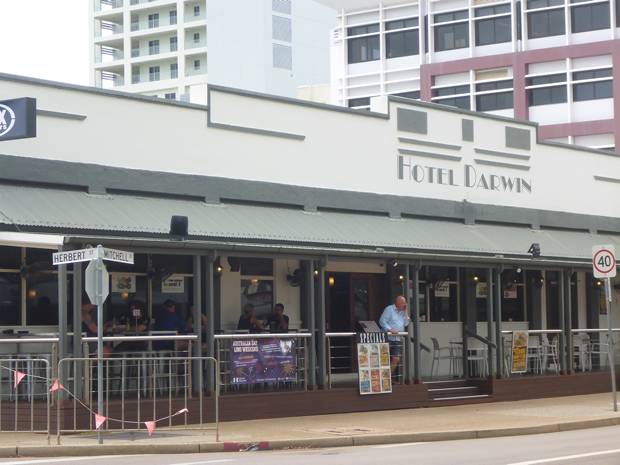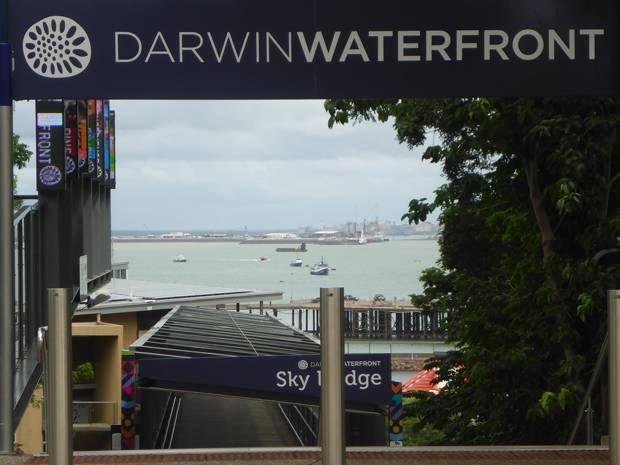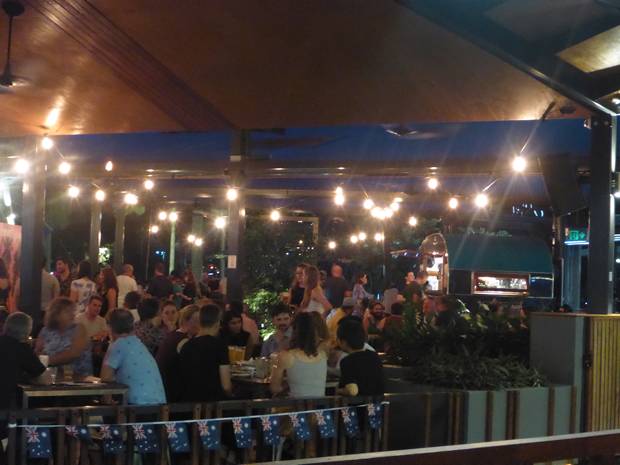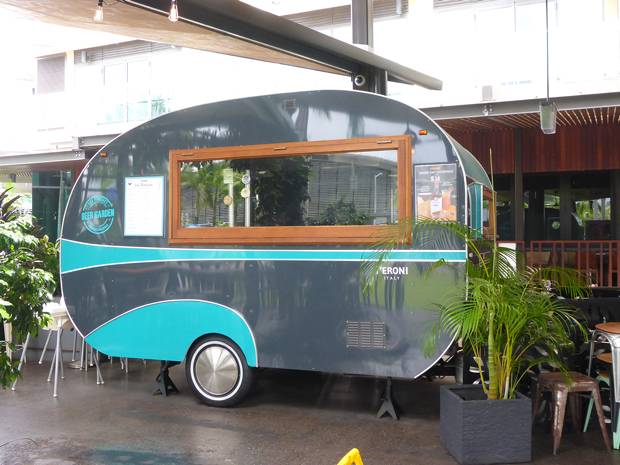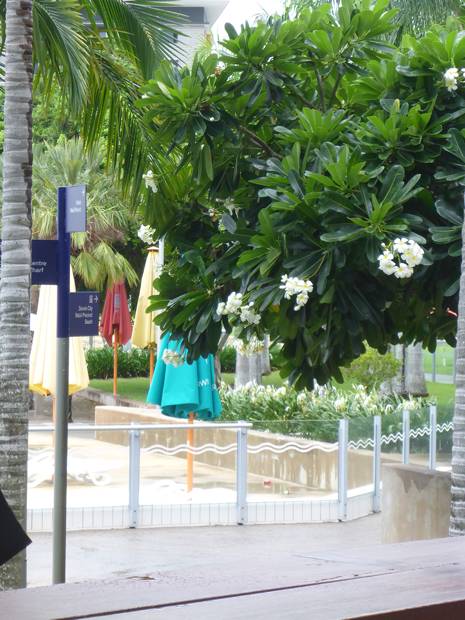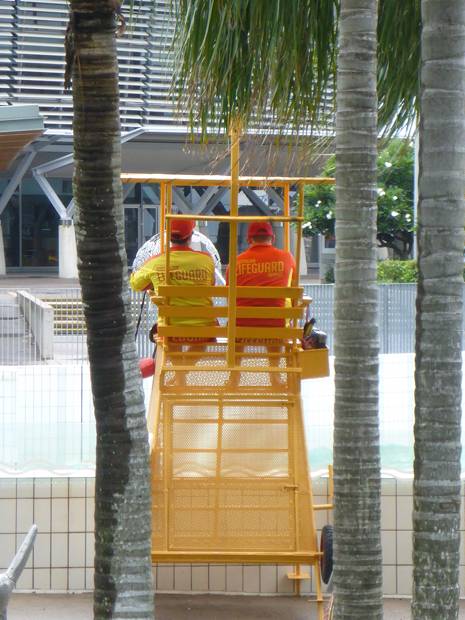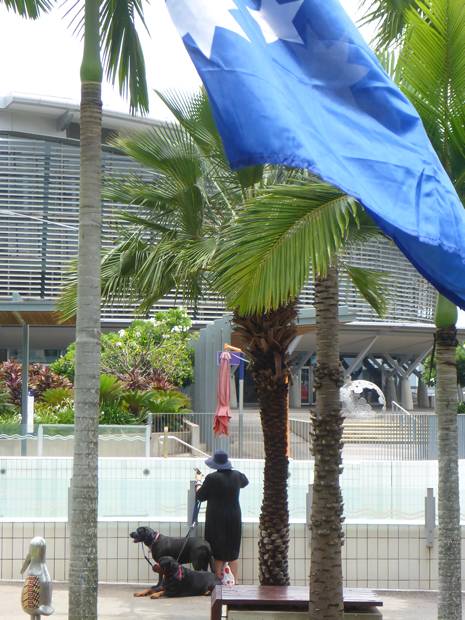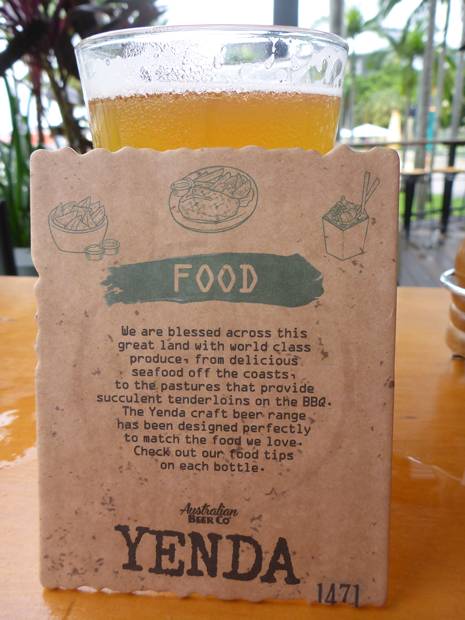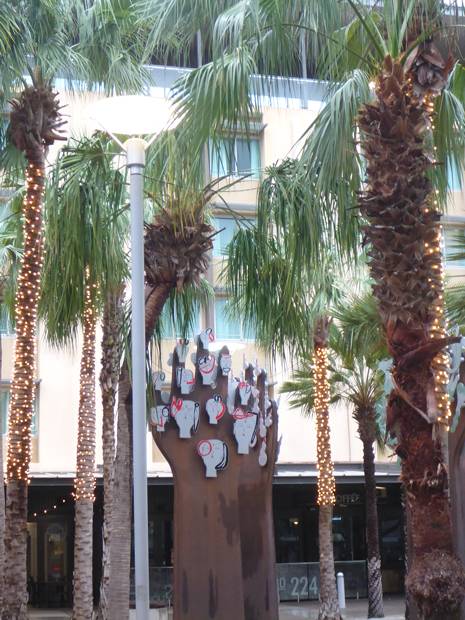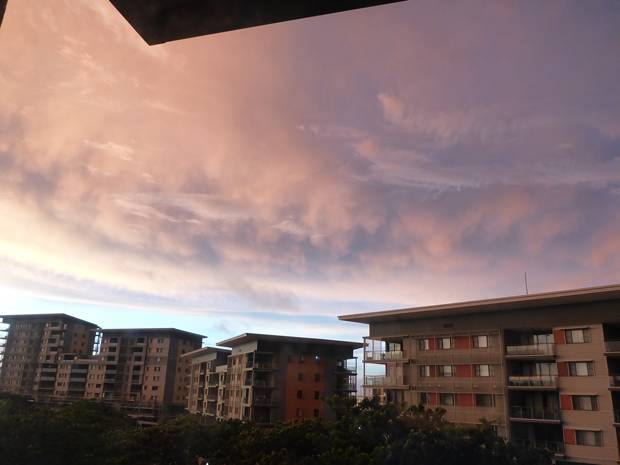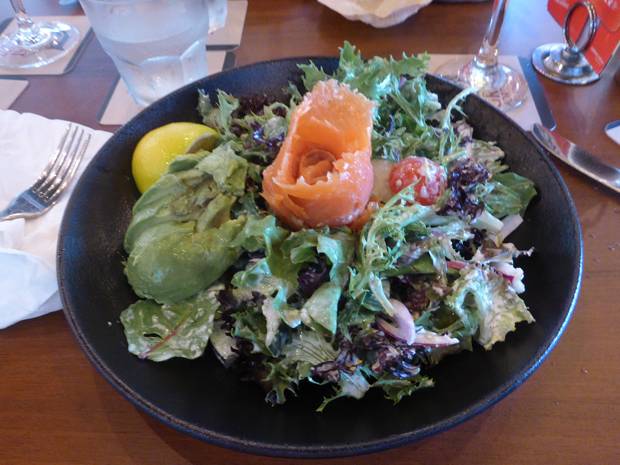The Everchanging Streets of Darwin

|
The Everchanging Streets of Darwin The views you see of the grounds around Port Darwin taken from our hotel window would have looked different if taken before March 2018 when Cyclone Marcus hit and robbed the city of many of its trees. The buildings are unchanged, being built of steel and given the building style referred to as ‘Troppo’ but there were more trees before Marcus. Marcus was considered the worst storm since Tracey in 1974, itself the worst in Australian history which destroyed over 70% of the buildings. Both brought winds of 160mph (the anemometer was broken by Tracey when it reached 135mph so the higher figure is an accurate estimate) and Marcus had gusts of 200mph, but few buildings were destroyed this time, testament to the improved building techniques and materials. Back in 1897 in the city’s infancy the entire collection of lightly constructed buildings were flattened by a cyclone and that, combined with the loss of two ships taking with them many townsfolk meant the area was slow to recover. So despite 3 major cyclones and 2 Japanese air raids in 1942 and 1943 like a bouncing ball, a very determined phoenix Darwin has risen into a new city each time. The ruins of the Old Town Hall help tell the story but Warren told us the different story of another building you see in the photo of the Roadmasters House which I took from the Darwin Heritage Trail Brochure produced by Northern Territory.com, Live Darwin and the NT Government. This innovative ‘cool indoors’ house was lived in until Tracey arrived and damaged it, necessitating repairs and restoration. We sat in the coach as another downpour of monsoon, (Gudjewg in the local tongue) dimensions prevented us from exploring or even taking a few photos of the discrete house tucked within its garden of mature greenery. Warren explained the construction of the walls and window louvres that left gaps between all the vertical wooden planks so any breeze would penetrate into the shaded interior and combine with the shade to keep it cool. Totally natural air con and no need for electricity. It is one of only three such pre-war houses left, built to accommodate staff of the North Australia Railway and is now a museum housing a collection of the instruments used by Gilbert McMinn who was a senior surveyor involved in the construction of the Overland Telegraph Line in 1869. Stone buildings fared better than others through the winds and bombs of history. Built as early as the 1880s using stone from the nearby porcellanite quarries, wood from Asia and slate roof tiles from the UK and still standing clean and proud in the tropical sun we saw The Old Lyons Cottage, substantial houses, The Victoria Hotel, commercial buildings, Administrative buildings including the 1884 Court House and the European style Government house completed in 1879. The town embraced the Art Deco style for a while and the Hotel Darwin you see in the photo I took as we drove by with Warren was open and serving full English Breakfasts on Christmas Day after Cyclone Tracey delivered much more than presents in her Christmas Eve sack. There was nothing nicer after Broke Back and Crook Foot had walked the streets of Darwin, exploring, than to return to the entrance of the Sky Bridge Walkway which sits on the roof of our hotel room wing and descend in the lift emerging to see the lights on in a delightful array of bars and eateries to choose from. One evening we were in the Fiddlers Green looking back across the paved area towards our room on the second floor (see photo) through a solid wall of raindrops wondering if the now regular evening downpour (Magumbu in the local Larrakia tongue) would ease before we wanted to retire or if this was going to be a long session. It didn’t matter. These few days in laid back Darwin felt like a second honeymoon when we could do as we pleased when we pleased after a month of travel and schedules and we were ready for the break. The next morning was heralded in under a pretty mother of pearl sky and we had to be up and ready by 6.30am for our visit to Kakadu National Park. What was that I said about ‘the break’? |
